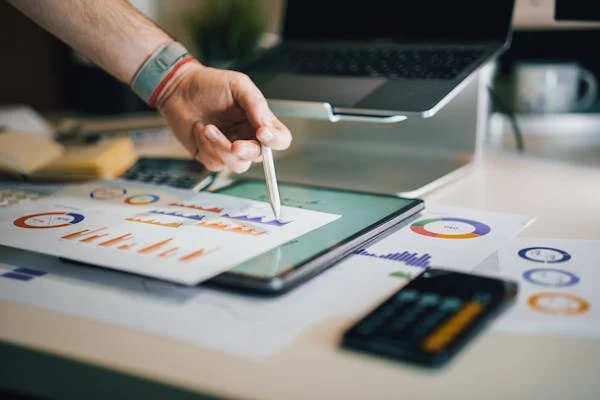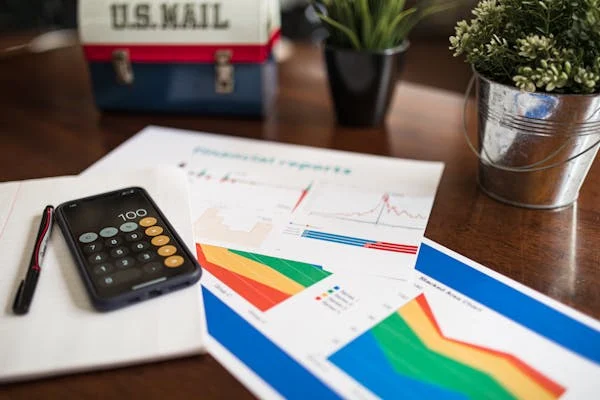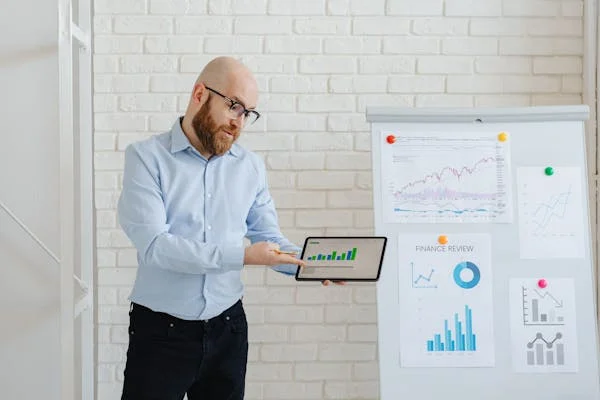When it comes to technology giants like Apple, Amazon, and Microsoft, the way they grow often grabs headlines. A big part of that growth comes from buying other companies. These aren’t small buys either. Some deals are worth billions. But how do these tech titans compare? Who spends more? Who plays it safe? This article breaks it all down with real numbers and stories behind the deals.
1. Microsoft’s acquisition of Activision Blizzard (2022): $68.7 billion
Why this deal was historic
When Microsoft acquired Activision Blizzard in 2022, it wasn’t just a big number—it was the biggest tech deal of the decade. Activision, the powerhouse behind Call of Duty and World of Warcraft, gave Microsoft a massive foothold in the gaming industry, especially with cloud gaming on the rise.
Gaming wasn’t a side hustle for Microsoft anymore. With this deal, they made it clear: gaming is core to their strategy.
What this means for Microsoft
Before the acquisition, Microsoft had Xbox and Game Pass. After this deal, they had a full catalog of legendary franchises. This move wasn’t just about owning titles—it was about owning time. The more players spend on Xbox or Game Pass, the more data, engagement, and loyalty Microsoft wins.
Plus, the deal helped them catch up to rivals like Sony, which had been building exclusive game libraries for years.
Why this move worked
There are a few clear reasons why this acquisition made sense:
- Recurring revenue: Activision brought subscriptions, microtransactions, and live services—all money-makers.
- Content advantage: Games like Call of Duty sell yearly, and people buy them religiously.
- Cloud gaming growth: Microsoft was betting on the future, not just the present.
Actionable takeaway
If you’re in tech and considering M&A, remember: size matters, but so does synergy. Ask not just what the company does, but how it strengthens your ecosystem.
For Microsoft, this deal wasn’t about adding—it was about multiplying what they already had.
2. Amazon’s acquisition of MGM Studios (2021): $8.45 billion
Why this deal was content-driven
Amazon didn’t buy MGM just to own a studio—they bought it for content leverage. At the time, Amazon Prime Video was competing with Netflix, Disney+, and HBO Max. Everyone had content, but few had iconic libraries.
MGM’s catalog gave Amazon 4,000 films and 17,000 TV shows, including James Bond.
How this helped Amazon Prime
Prime Video was always more than a video platform—it was a customer retention tool for Prime memberships. The MGM deal gave them ammunition to keep users engaged, subscribed, and loyal.
Here’s what the deal unlocked:
- Franchise potential: They didn’t just get content—they got IP. That meant reboots, sequels, and spin-offs.
- Back-end data: Amazon now had deeper insights into how legacy content performs over time.
- Global play: James Bond and MGM’s other hits have global recognition—perfect for Amazon’s worldwide push.
The risk in the move
Buying content doesn’t always pay off. Amazon had to balance honoring MGM’s legacy while making its content modern and relevant. And integrating a Hollywood studio into a tech company isn’t simple.
Still, Amazon had one key advantage: patience. They weren’t looking for a quick win—they were building for the next decade.
Actionable takeaway
Don’t just look at what a company makes. Look at how it enhances your ecosystem. Amazon saw that owning content meant owning attention—and attention leads to conversions.
In M&A, that’s a playbook worth remembering.
3. Apple’s acquisition of Beats Electronics (2014): $3 billion
Why this was a brand play
When Apple bought Beats in 2014, some people scratched their heads. Beats was known for stylish headphones and a streaming service that hadn’t yet hit its stride.
But Apple wasn’t just buying a product—they were buying a brand, a vibe, and a piece of culture.
What Apple gained
Beats brought in something Apple needed at the time:
- Cool factor: Beats was big with younger audiences and celebrities.
- Audio hardware expertise: This helped Apple launch its own products like AirPods later.
- Streaming service: Beats Music laid the groundwork for what became Apple Music.
And let’s not forget—Dr. Dre and Jimmy Iovine, the brains behind Beats, joined Apple too. That meant insight, industry connections, and creative thinking.
Why it made sense
Apple saw that music wasn’t just about iTunes anymore. Spotify had proven that streaming was the future. By acquiring Beats, Apple fast-tracked its entry into streaming while strengthening its wearables and lifestyle lineup.
Also, Beats headphones were expensive, and Apple knew how to sell expensive gear.
The cultural fit
At first glance, Apple and Beats seemed different. One was sleek and minimalist. The other was loud and stylish. But underneath, both were about status, taste, and user experience. It worked.
Actionable takeaway
Sometimes, the best M&A deals aren’t about numbers—they’re about identity. If a company brings something your brand lacks (like a younger audience or trend appeal), that’s powerful.
Apple didn’t need more hardware—they needed cultural currency. And they got it.
4. Microsoft’s acquisition of LinkedIn (2016): $26.2 billion
Why Microsoft wanted a social network
In 2016, Microsoft shocked many by acquiring LinkedIn, a professional network, for over $26 billion. Why would a software and cloud giant want a social media company?
The answer is simple: data, distribution, and dominance in the workplace.
Microsoft already ruled the business productivity space with Office, Outlook, and Teams. LinkedIn gave them a front-row seat to where people worked, what they did, and what skills they had. It wasn’t just a network—it was a living database of professionals.
What Microsoft got out of it
Here’s how the deal worked in their favor:
- Business intelligence: LinkedIn provided data that could feed into Microsoft’s CRM, hiring, and productivity tools.
- Content reach: LinkedIn became a massive platform for B2B content and thought leadership.
- Ad revenue: Microsoft unlocked new advertising channels through LinkedIn’s sponsored posts and job ads.
It was less about “owning social media” and more about deepening their grip on the professional world.
The integration challenge
LinkedIn remained mostly independent, and that was a smart move. Microsoft didn’t force it to become another Outlook. Instead, they focused on weaving it into key tools like Dynamics and Teams.
This approach protected LinkedIn’s culture and user trust while still creating synergies.
Actionable takeaway
M&A doesn’t always mean merging systems. Sometimes, the smartest play is strategic autonomy. If the company you’re buying has strong brand equity, preserve it. Let the brand breathe—while you build subtle integrations that quietly add value.
That’s exactly what Microsoft did.
5. Amazon’s acquisition of Whole Foods Market (2017): $13.7 billion
Why a tech company bought a grocery chain
In 2017, Amazon made its boldest move in the physical world by buying Whole Foods. It wasn’t about groceries—it was about logistics, customer data, and the future of retail.
Amazon didn’t just want to deliver books and electronics. They wanted to deliver everything. And groceries were the missing piece.
Whole Foods gave them instant access to:
- Physical retail locations in key neighborhoods
- Established supplier relationships
- Customer behavior in high-frequency categories
How the deal changed Amazon’s retail game
The impact was fast. Amazon Prime members got discounts. Online grocery delivery became faster and more reliable. Whole Foods locations became distribution hubs.
And perhaps most importantly, Amazon began rethinking the store experience with tech integrations like cashier-less checkout and app-based discounts.
It wasn’t about becoming a grocery store—it was about becoming the store.
What others learned from this
Retailers like Walmart and Target accelerated their digital transformation after the deal. They saw Amazon’s move as a wake-up call.
It showed that tech companies weren’t just living online. They were coming for physical retail—and they had the resources to disrupt it completely.
Actionable takeaway
If your long-term goal is market ownership, M&A can help you leapfrog infrastructure. Amazon didn’t build a grocery chain—they bought one with scale, reputation, and urban presence.
Think beyond your vertical. Sometimes, buying sideways unlocks entirely new capabilities.
6. Apple’s acquisition of Intel’s smartphone modem business (2019): $1 billion
Why Apple went internal
Apple has always preferred owning its supply chain. That’s why in 2019, they bought Intel’s smartphone modem business for $1 billion.
At the time, Apple relied on Qualcomm for modem chips—the part of the phone that handles cellular connections. But legal battles and licensing disputes had made things tense.
Apple wanted independence. This deal made that possible.
What Apple gained
By acquiring Intel’s modem unit, Apple didn’t just buy hardware. They acquired:
- 2,200 Intel employees
- Intellectual property and patents
- Design blueprints for 5G modems
This gave Apple full-stack control of everything from chips to software. That meant better optimization, tighter security, and eventually, lower costs.
The strategic play
For Apple, this move was more than technical. It was about protecting its future. 5G was about to explode, and Apple didn’t want to be at the mercy of third-party suppliers anymore.
Just like they built their own M-series chips for Macs, they were laying the groundwork to do the same in iPhones.
Actionable takeaway
Control is power. If your product relies heavily on a third-party component, consider owning that component outright. It reduces risk, improves margins, and gives you more freedom to innovate.
Apple didn’t want to compete with Intel—they wanted to remove dependencies. And they did.
7. Microsoft’s acquisition of Nuance Communications (2021): $19.7 billion
Why this was about AI and healthcare
In 2021, Microsoft acquired Nuance Communications, a leader in voice recognition and AI for healthcare, for nearly $20 billion. This wasn’t about expanding into new consumer markets—it was about doubling down on enterprise AI.
Nuance was already used by over 77% of U.S. hospitals. Its speech-to-text technology helped doctors dictate medical notes, saving time and improving accuracy.
Microsoft saw a huge opportunity. With the rise of cloud healthcare tools and AI, Nuance fit perfectly into their Azure and industry cloud strategy.
Strategic synergy at its best
Here’s what made this acquisition work:
- Industry fit: Microsoft was building industry-specific cloud solutions, and Nuance added serious credibility in healthcare.
- AI focus: Nuance’s Dragon software was advanced in natural language processing (NLP)—an area Microsoft was heavily investing in.
- Enterprise contracts: Nuance had strong, sticky relationships with hospital systems and insurers.
This wasn’t about scale—it was about depth. Microsoft wanted to go deeper into sectors where growth was high but complexity was even higher.
The long-term value
With AI booming in healthcare, this acquisition wasn’t just timely—it was predictive. Microsoft saw that the next wave of AI applications would need industry knowledge, privacy controls, and trusted brands.
Nuance gave them all three.
Actionable takeaway
When evaluating an M&A target, don’t just look at revenue or size. Look at fit. Does the company have deep expertise in a space you’re trying to own? Do they open doors you can’t open yourself?
That’s how Microsoft used Nuance—as a gateway to healthcare transformation.
8. Amazon’s acquisition of Zoox (2020): $1.2 billion
Why Amazon moved into autonomous vehicles
In 2020, Amazon acquired Zoox, a startup working on fully autonomous electric vehicles. The $1.2 billion price tag seemed modest for a tech giant—but the strategic angle was huge.
This wasn’t about building the next Tesla. It was about transforming delivery.
Amazon wanted control over the last mile—the final stretch of a package’s journey to a customer. With Zoox, they saw a future where autonomous vehicles could cut delivery costs, speed up service, and reduce reliance on third-party carriers.
What Zoox brought to the table
Unlike other self-driving companies, Zoox wasn’t just retrofitting existing cars. They were designing custom robo-taxis from scratch, built for autonomy from the ground up.
That meant:
- Tight software-hardware integration
- Bidirectional design (no front or back)
- A platform for both passenger and cargo delivery
For Amazon, this was futuristic infrastructure, not a moonshot.
The automation advantage
Automation is key to Amazon’s long-term margin improvement. From warehouse robots to cashier-less stores, they’ve bet big on reducing manual labor.
Zoox was an extension of that thinking—focused on roads, not shelves.
Actionable takeaway
Small deals can lead to big disruption. If you see a startup building something that could fundamentally improve a core process in your business—even if it’s not fully ready—get in early.
Amazon wasn’t buying market share. They were buying the future of logistics.
9. Apple’s acquisition of Dialog Semiconductor assets (2018): $600 million
Why Apple brought chip design in-house
In 2018, Apple paid $600 million to buy specific power management chip assets from Dialog Semiconductor. This wasn’t a full company acquisition—but it was one of Apple’s largest strategic asset purchases.
Why?
Because battery life is one of the biggest user concerns in mobile devices. And Apple wanted full control over how power was managed inside iPhones, iPads, and wearables.
What the deal included
Apple didn’t just buy designs—they bought people. The deal brought:
- Dialog’s power management chip IP
- 300+ engineers (most of whom already worked with Apple)
- Global offices and R&D infrastructure
This was Apple’s way of saying: “We don’t want to just influence your roadmap—we want to own it.”
The Apple chip strategy
This move was part of a bigger picture. Apple had already begun designing its own A-series chips. It later launched M-series chips for Macs. Power management was just one more piece of the puzzle.
By bringing this in-house, Apple reduced its reliance on third-party chipmakers and gained tighter hardware-software integration.
Actionable takeaway
Owning key parts of your product stack gives you an edge. You can optimize for performance, control costs, and innovate faster. If a partner already depends on your roadmap, consider bringing that function internal.
Apple didn’t wait for supply chain risk to hit—they preempted it.
10. Microsoft’s acquisition of GitHub (2018): $7.5 billion
Why Microsoft went open source
In 2018, Microsoft shocked the tech world again by acquiring GitHub for $7.5 billion. GitHub was (and still is) the go-to platform for developers. It wasn’t just a place to host code—it was where open-source collaboration happened at scale.
Historically, Microsoft had a tense relationship with open source. But Satya Nadella’s leadership signaled a major shift. This deal wasn’t just symbolic—it was deeply strategic.
What Microsoft really wanted
Microsoft wasn’t buying GitHub to change it. They wanted to embrace it, support it, and integrate it with their growing developer and cloud ecosystem.
Here’s how it aligned perfectly with their goals:
- Azure integration: GitHub helped Microsoft feed its cloud ecosystem. More developers on GitHub meant more potential Azure users.
- Developer goodwill: By backing open source, Microsoft repositioned itself as a developer-friendly brand.
- Toolchain control: GitHub, combined with Visual Studio Code and Azure DevOps, gave Microsoft end-to-end ownership of the modern developer stack.
Building trust
Crucially, Microsoft didn’t “Microsoft-ify” GitHub. They let it remain independent in tone and structure. That helped ease concerns in the developer community and kept the platform thriving.
Since the acquisition, GitHub has only grown in popularity. Features like GitHub Copilot—powered by AI—show how this acquisition keeps feeding Microsoft’s innovation engine.
Actionable takeaway
If you’re acquiring a product with a strong community, don’t force your culture on it. Let it grow organically while providing support, scale, and vision. GitHub’s success post-acquisition is proof that respecting user trust pays off long term.
11. Amazon’s acquisition of iRobot (2022): $1.7 billion (deal later dropped in 2024)
Why Amazon aimed for smart home dominance
In 2022, Amazon announced its intent to acquire iRobot, the maker of Roomba vacuum cleaners, for $1.7 billion. It seemed like a smart extension of Amazon’s Alexa and smart home ecosystem.
Roombas are in millions of homes. They collect floor plans, patterns, and user habits. For Amazon, that data could have been used to fine-tune everything from home automation to product delivery.
The move showed Amazon’s continued commitment to owning the smart home.
Why the deal didn’t go through
Despite the strategic logic, the deal faced regulatory hurdles in the EU and US. Antitrust concerns were raised about Amazon gaining too much data power in the home.
In early 2024, Amazon walked away from the deal, paying a breakup fee to iRobot.
Still, the intention behind the acquisition remains valuable to study.
Lessons from the attempt
Amazon was betting on three things:
- Device integration: Roomba could have connected with Alexa, Ring, and Echo systems.
- Data advantage: Floor maps + behavior data = better recommendations and product placement.
- Hardware footprint: Amazon wanted to be in more rooms with more smart devices.
Even though the deal didn’t close, it showed how physical automation ties into digital strategy.
Actionable takeaway
Not every deal closes—but intent reveals strategy. If you’re looking to expand your product’s ecosystem, consider what adjacent devices or platforms might accelerate your vision. And always prepare for regulatory friction, especially when data is involved.
12. Apple’s acquisition of PrimeSense (2013): $360 million
Why Apple cared about 3D sensing
In 2013, Apple quietly acquired PrimeSense, an Israeli startup known for its 3D sensing technology. PrimeSense’s tech powered the original Microsoft Kinect—an innovation in gesture-based interaction.
So why would Apple want it?
The answer became clear years later: Face ID.
Apple used PrimeSense’s intellectual property to develop the TrueDepth camera system in iPhones and iPads. This enabled secure facial recognition, Animoji, and more.
The real goal: differentiation
Apple’s strength lies in making hardware that feels magical. Face ID was a leap in convenience and security. It also helped Apple move toward a buttonless, seamless user interface.
This deal didn’t just add features—it changed the way people interacted with their phones.
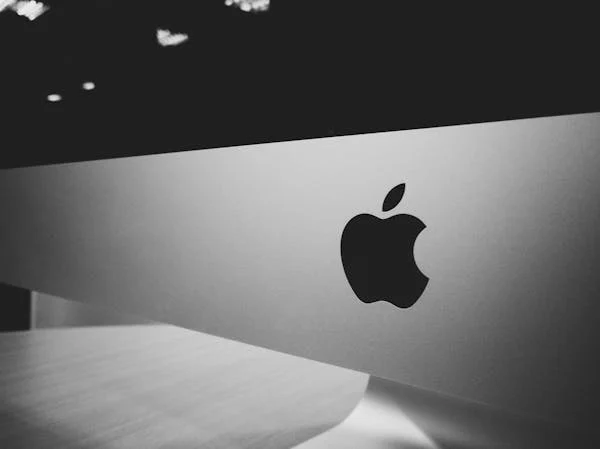
Strategic quiet
What’s interesting is how little Apple said about this deal. They didn’t use the PrimeSense brand. They just absorbed the tech and talent, then reimagined it.
That’s classic Apple: buy quietly, build beautifully, launch boldly.
Actionable takeaway
If your product experience hinges on a new type of interaction—gesture, voice, vision—look for companies pioneering in that space. The right acquisition can shave years off your R&D timeline.
Apple didn’t invent 3D sensing. They acquired it, adapted it, and made it feel native.
13. Microsoft’s acquisition of Skype (2011): $8.5 billion
Why Microsoft needed voice and video
In 2011, Microsoft made a major play into communication tech by acquiring Skype for $8.5 billion. At the time, Skype was the most recognized name in internet calling, with hundreds of millions of users globally.
Microsoft wanted a strong consumer-facing communication platform that could also plug into its enterprise ecosystem. Skype gave them both reach and relevance.
What they saw in Skype
Here’s what made Skype attractive:
- Brand awareness: Skype was practically a verb—people didn’t video call, they “Skyped.”
- User base: 300 million active users was no small feat.
- Global infrastructure: Skype had robust backend architecture for real-time voice and video.
For Microsoft, which had just launched Office 365 and was pushing into enterprise collaboration, Skype added a new communication layer that fit into both personal and business tools.
What didn’t go as planned
Despite the strong start, Skype faced stiff competition from newer platforms like Zoom, WhatsApp, and later, Microsoft’s own Teams.
Some challenges included:
- Integration delays
- Confusing product direction
- Security and performance issues in key markets
Eventually, Microsoft pivoted much of its focus to Teams, which grew explosively during the pandemic.
Actionable takeaway
Not every big acquisition ends in dominance. Even well-known platforms can lose steam if innovation stalls. If you’re acquiring a product with momentum, make sure to keep pushing it forward—fast.
Otherwise, internal competition or outside challengers can steal the spotlight.
14. Amazon’s acquisition of One Medical (2022): $3.9 billion
Why Amazon entered healthcare
In 2022, Amazon acquired One Medical for $3.9 billion, marking one of its most aggressive moves into the healthcare space.
Why healthcare?
Because it’s one of the biggest, slowest, and most expensive sectors—and Amazon believes it can simplify and speed it up.
One Medical is a membership-based primary care provider with both virtual and in-person services. The model fits well with Amazon’s obsession for customer convenience and recurring revenue.
The strategic fit
This acquisition gave Amazon:
- Physical clinics in top U.S. cities
- A tech-savvy user base already paying for care
- Data and insights across patient journeys
It’s part of a broader push that includes Amazon Pharmacy and the now-retired Amazon Care. One Medical gave them real infrastructure—and real patients.
Amazon’s long game
Healthcare isn’t just another category. It’s massive and hard to crack. But Amazon plays the long game. With its logistical strength and focus on user experience, it could eventually reshape how people access everyday care.
Imagine prescription delivery, Prime healthcare discounts, and seamless doctor appointments—all within the Amazon ecosystem.
That’s the future they’re aiming for.
Actionable takeaway
Don’t shy away from complex industries if your company has the discipline and scale to improve them. Sometimes the best growth comes from areas where user experience is broken and no one else wants to fix it.
Amazon sees that opportunity in healthcare—and is moving quickly.
15. Apple’s acquisition of Anobit (2012): ~$400 million
Why Apple invested in flash memory
In 2012, Apple acquired Anobit, an Israeli company that specialized in flash memory technology, for around $400 million.
This wasn’t a flashy acquisition, but it was critical. Anobit made memory more reliable and faster—something Apple needed to keep its iPhones and iPads ahead of the curve.
Performance under the hood
Apple’s brand is built on sleek devices. But those devices are only as good as their internal performance.
Anobit’s memory controllers helped:
- Improve read/write speeds
- Reduce data errors
- Extend flash lifespan
These behind-the-scenes upgrades directly impacted how smooth and fast Apple products felt to users.
Why it mattered
At the time, Apple was shipping tens of millions of devices every quarter. Tiny improvements in storage reliability meant big boosts in user satisfaction and device longevity.
It also reduced reliance on third-party chipmakers and gave Apple another layer of control.
Actionable takeaway
Sometimes the best acquisitions aren’t visible to users—but they’re deeply felt. If you can improve core performance, even behind the scenes, that adds real value over time.
Apple didn’t need to market Anobit. They just used the tech to quietly make every product better.
16. Microsoft’s acquisition of Mojang (Minecraft) (2014): $2.5 billion
Why Microsoft bought a game, not just a company
In 2014, Microsoft paid $2.5 billion to acquire Mojang, the studio behind Minecraft. To outsiders, it might’ve looked like a kid-focused gaming play. But Microsoft saw it as something much bigger.
Minecraft wasn’t just a game—it was a global creative platform. Millions of users, from school kids to coders, were building worlds, modding content, and forming communities.
It was the YouTube of gaming—and Microsoft wanted to own that cultural movement.
Strategic benefits
Here’s what Mojang brought to the table:
- Cross-platform audience: Minecraft ran on PC, Xbox, PlayStation, mobile—even Raspberry Pi.
- Education potential: Minecraft was being used in schools to teach everything from math to teamwork.
- Massive user-generated content: Players were creating mods, servers, and tutorials at scale.
Microsoft saw an opportunity to position itself not just as a game publisher but as a platform enabler for digital creativity.
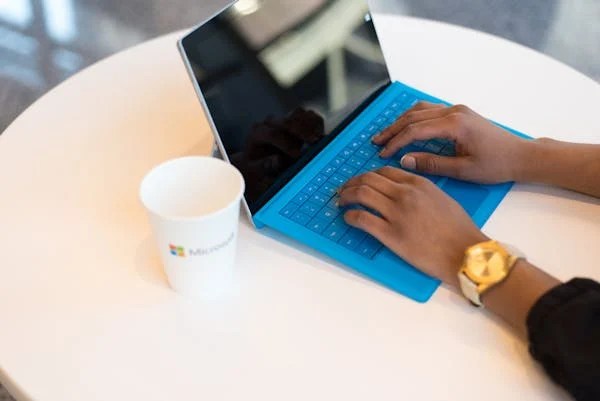
Monetization the right way
Interestingly, Microsoft didn’t rush to aggressively monetize Minecraft. They took a slow and steady approach—adding marketplace features, paid expansions, and educational versions only after users were comfortable.
That preserved the trust of the community and kept the brand growing.
Actionable takeaway
Sometimes the value of a company lies in its community, not just its product. If people are building, sharing, and living on a platform, that’s powerful—and often defensible.
Microsoft didn’t buy Mojang for its codebase. They bought it for its culture and creativity.
17. Amazon’s acquisition of Kiva Systems (2012): $775 million
Why robots were the future of delivery
Back in 2012, Amazon acquired Kiva Systems, a robotics company that made warehouse fulfillment smarter and faster. At $775 million, it was one of Amazon’s largest acquisitions at the time—and it marked the beginning of its robotic revolution.
Fulfillment is one of Amazon’s biggest costs. Every second saved in a warehouse translates to millions saved annually. Kiva’s robots helped automate that process, reducing the need for humans to walk miles picking items.
What changed after the deal
Once the deal closed, Amazon did something unexpected: it stopped selling Kiva robots to other companies. Instead, it kept the tech exclusive for itself and rebranded it as Amazon Robotics.
This gave Amazon a critical edge over competitors like Walmart and Target who were still relying on manual or third-party automation systems.
The long play
By 2025, Amazon has tens of thousands of robots working across hundreds of fulfillment centers. These bots:
- Transport shelves of products to human packers
- Help optimize storage layouts
- Improve speed and reduce errors
The result? Faster delivery, lower cost, and a warehouse system competitors can’t easily copy.
Actionable takeaway
Don’t just buy innovation—use it to build a moat. Amazon didn’t just acquire Kiva—they turned it into an in-house advantage that powered a decade of logistics dominance.
If a technology can give you long-term operational superiority, don’t share it. Scale it internally.
18. Apple’s acquisition of AuthenTec (2012): $356 million
Why security and biometrics became central
In 2012, Apple acquired AuthenTec, a company specializing in fingerprint sensors and biometric security, for $356 million. This move wasn’t just a tech upgrade—it helped change the way users unlocked and secured their phones.
Within a year, Apple introduced Touch ID on the iPhone 5s, setting a new standard for mobile security.
What AuthenTec offered
AuthenTec’s technology was far ahead of the curve. It had:
- High-accuracy fingerprint sensors
- Hardware-level encryption capabilities
- A track record of licensing tech to major brands
Apple didn’t want to license anymore. It wanted to own the tech, integrate it deeply, and keep user data private and secure.
Strategic foresight
This acquisition laid the foundation for Apple’s later moves into secure elements, Apple Pay, and privacy-by-design hardware features.
It wasn’t just about unlocking your phone faster—it was about building user trust and enabling secure mobile payments.
By controlling the full biometric experience, Apple set itself apart from Android competitors who relied on third-party sensors and software.
Actionable takeaway
Security is a differentiator. If your product involves personal data or transactions, building trust at the hardware level is invaluable.
Apple didn’t just improve convenience. It created a privacy moat—powered by smart, targeted M&A.
19. Microsoft’s acquisition of ZeniMax Media (2020): $7.5 billion
Why Microsoft bought game studios by the bundle
In 2020, Microsoft made another massive play in the gaming industry by acquiring ZeniMax Media, the parent company of several legendary game studios, including Bethesda Softworks, for $7.5 billion.
Bethesda was known for titles like The Elder Scrolls, Fallout, and Doom. These weren’t just games—they were global franchises with decades of fan loyalty.
With this deal, Microsoft wasn’t just buying games. They were buying time spent on Xbox and Game Pass.
What this meant for Microsoft’s strategy
Microsoft had a clear goal: grow Game Pass into the “Netflix of gaming.” To do that, they needed content—especially exclusive content. ZeniMax gave them:
- 8 game studios with deep IP libraries
- Upcoming blockbuster releases under their control
- A stronger position against Sony’s PlayStation exclusives
Owning content wasn’t just about pride—it was about platform differentiation. If gamers could only play certain franchises on Xbox or via Game Pass, Microsoft gained leverage.

The long-term impact
After the deal, Microsoft said that some future ZeniMax titles would be exclusive to Xbox and PC. That was a major shift—and a wake-up call to the industry.
It meant content control was becoming the new hardware advantage.
Actionable takeaway
In markets where content drives platform choice—whether it’s streaming, gaming, or education—owning the content is critical.
Microsoft didn’t just want better games. They wanted more reasons for users to join and stay inside their ecosystem.
20. Amazon’s acquisition of PillPack (2018): $753 million
Why Amazon went after prescription delivery
In 2018, Amazon acquired PillPack for $753 million. At first glance, it looked like a small pharmacy startup. But PillPack was much more—a licensed pharmacy that shipped personalized daily pill packets to customers.
This gave Amazon an instant foothold in the complex, highly regulated U.S. pharmaceutical market.
Amazon’s real target? Reinventing pharmacy with better tech and faster delivery.
What PillPack added
PillPack specialized in simplifying life for patients who take multiple prescriptions. They organized pills by time and date, packaged them neatly, and shipped directly to doors.
That’s exactly the kind of convenience Amazon thrives on. More importantly, PillPack brought:
- Licensing in all 50 U.S. states
- Established relationships with insurers and pharmacy benefit managers (PBMs)
- A digital-native approach to healthcare
This wasn’t just another online store—it was a licensed, regulated, and scalable business model.
Where Amazon took it
After the acquisition, Amazon launched Amazon Pharmacy, expanding the PillPack model to a broader user base.
Prime members could now order medications online, see transparent pricing, and get fast delivery. The vision was simple: make prescriptions as easy as ordering a book.
Actionable takeaway
If you’re targeting a high-friction market with lots of paperwork, regulation, and complexity—look for a startup that’s already cracked the model. PillPack didn’t disrupt pharmacy by being loud. It disrupted by being smart and compliant.
Amazon bought the right team, the right tech, and the right licenses—all in one move.
21. Apple’s acquisition of Shazam (2018): $400 million
Why music discovery mattered to Apple
In 2018, Apple acquired Shazam, the popular music recognition app, for around $400 million. The app had over a billion downloads and was one of the most loved tools for music fans trying to identify songs on the go.
But this wasn’t about owning another app—it was about deepening Apple’s ecosystem and strengthening Apple Music.
What made Shazam special
Shazam’s core feature was simple: hear a song, open the app, and find out what’s playing in seconds. But behind that simplicity was a powerful audio fingerprinting engine and a massive music database.
What Apple gained:
- Real-time music discovery data
- Engagement insights across genres, regions, and devices
- Opportunities to route more traffic directly to Apple Music
Shazam was already integrated with Siri, so the product fit right into Apple’s long-term vision.
How Apple used it
After the acquisition, Apple removed ads from Shazam and made it completely free. That increased usage and loyalty, while allowing Apple to steer identified songs directly into Apple Music playlists.
It also gave them valuable data: what songs were going viral, where they were trending, and what fans were curious about.
That’s actionable intelligence in the age of streaming wars.
Actionable takeaway
If there’s an app that already owns a user behavior relevant to your core business, consider acquiring it—even if it’s a single-feature tool.
Apple didn’t need to reinvent music discovery. They just bought the best tool out there and plugged it in perfectly.
22. Microsoft’s acquisition of aQuantive (2007): $6.3 billion
Why Microsoft went into digital advertising
Back in 2007, Microsoft acquired aQuantive, an online advertising company, for $6.3 billion. At the time, it was Microsoft’s biggest acquisition ever. They were racing to catch up with Google, who had just bought DoubleClick.
aQuantive offered a digital ad platform, media buying tools, and a creative agency all under one roof. It seemed like a full-service solution to help Microsoft challenge Google’s growing ad dominance.
What went wrong
Despite the big expectations, the integration didn’t go well. Microsoft had difficulty aligning aQuantive with its internal teams and platforms. The results were underwhelming.

By 2012, Microsoft wrote off nearly the entire value of the deal—$6.2 billion. It remains one of the most notable M&A failures in tech history.
Lessons from the failure
There were several issues:
- Cultural mismatch: aQuantive’s agency mindset clashed with Microsoft’s engineering culture.
- Slow integration: Microsoft couldn’t move fast enough to compete with Google’s ad machine.
- Lack of product clarity: Microsoft already had ad tools, and aQuantive didn’t clearly fit into the ecosystem.
Still, the acquisition did leave behind some useful IP and talent that helped shape Microsoft’s future ad products.
Actionable takeaway
Not all big-ticket M&As pay off. If you’re buying a company in a highly competitive space, make sure the integration path is clear. Otherwise, you risk paying a premium for something you can’t fully use.
Microsoft overreached—and paid the price. It’s a reminder that focus matters just as much as ambition.
23. Amazon’s acquisition of Ring (2018): $1 billion
Why home security was the next frontier
In 2018, Amazon bought Ring, a smart doorbell and home security company, for $1 billion. At the time, Ring was already popular among early adopters, and its “video doorbell” product had become a household name.
For Amazon, this was a strategic extension of its smart home ecosystem—and a play for trust and safety.
How Ring fit into Amazon’s vision
Ring’s camera-enabled doorbells allowed users to see, hear, and speak to visitors at their door from anywhere. This played directly into Amazon’s last-mile delivery challenges, where package theft and access were big issues.
Post-acquisition, Amazon:
- Integrated Ring with Alexa and Echo devices
- Expanded into security cameras and alarm systems
- Launched Amazon Key for secure in-home and garage delivery
This was about much more than video—it was about control and convenience.
Why the deal worked
Amazon didn’t just acquire Ring’s products. They acquired:
- A trusted consumer brand
- Data-rich hardware
- A fast-growing user base
Ring helped Amazon build more sticky services, more reasons for people to buy Prime, and more insight into how people use their homes.
Actionable takeaway
Look for acquisitions that solve friction in your delivery model. Amazon knew people worried about package theft. Ring solved that problem—and turned a security product into a commerce enabler.
Sometimes, solving a small problem creates big value.
24. Apple’s acquisition of Topsy Labs (2013): ~$200 million
Why Apple quietly bought a social search engine
In 2013, Apple acquired Topsy Labs, a social analytics company known for indexing and analyzing Twitter data. The deal was worth around $200 million—but Apple never publicly shared its intentions.
Topsy could analyze tweets, measure sentiment, and track trending topics. It offered powerful insights into real-time human behavior.
So why did Apple buy it?
The possible reasons
There were a few strategic motives behind the deal:
- Search improvement: Apple was working to improve Spotlight and Siri. Topsy’s tech helped interpret real-time queries and language patterns.
- Music and media insights: Understanding what’s trending online can shape how users discover content in Apple Music and the App Store.
- Advertising and content relevance: Though Apple isn’t known for heavy ad targeting, some internal tools still benefit from contextual relevance.
Shortly after the acquisition, Topsy’s independent services were shut down—but the team and tech were folded into Apple’s data and search efforts.
Long-term influence
Years later, Apple improved Siri’s natural language processing and launched tools like App Store trending searches and curated playlists in Apple Music. Topsy’s data capabilities likely played a role behind the scenes.
This wasn’t an acquisition for headlines. It was one for infrastructure.
Actionable takeaway
If you’re investing in user experience, think about the data layer. Sometimes, buying a company that understands behavior better than you do is the smartest way to catch up—or get ahead.
Apple didn’t need to be in social media. But it did need to understand social behavior.
25. Microsoft’s acquisition of Yammer (2012): $1.2 billion
Why Microsoft bought an enterprise social network
In 2012, Microsoft acquired Yammer, a business-focused social networking platform, for $1.2 billion. Yammer was gaining traction among enterprises as a sort of “Facebook for the workplace.”
Microsoft saw it as a natural extension of its productivity suite—especially as collaboration was becoming a key value in the enterprise space.
What Yammer brought to the table
Yammer enabled employees to post updates, share files, and start conversations in a format that felt modern and social. It introduced a level of transparency and engagement that email never could.
For Microsoft, Yammer brought:
- An engaged, corporate customer base
- Modern UI/UX for business collaboration
- A step forward into the world of enterprise social tools
This was before Microsoft Teams existed, so Yammer was seen as a way to modernize communication in Office 365.
What happened post-acquisition
Yammer was slowly integrated into the Office ecosystem, but as Teams rose to prominence, it started to take a backseat. Microsoft repositioned Yammer as a more asynchronous communication tool—something akin to a company bulletin board.
While it never became the dominant enterprise network Microsoft hoped for, Yammer still paved the way for the collaboration-first thinking that powered Teams’ rise.
Actionable takeaway
Not every acquisition needs to dominate forever. Sometimes, it’s a stepping stone. Yammer helped Microsoft explore social dynamics at work, test new UIs, and ultimately build something bigger.
If a company helps you skip a learning curve, it’s often worth the price—even if the original product fades.
26. Amazon’s acquisition of Twitch (2014): ~$970 million
Why Amazon jumped into live streaming
In 2014, Amazon surprised everyone by acquiring Twitch, a fast-growing live-streaming platform focused on video games, for nearly $1 billion.
At the time, many expected Google (YouTube’s parent) to make the deal. But Amazon swooped in and won the bidding war.
Why?
Because Twitch wasn’t just a platform—it was a community. And Amazon saw its future in digital media, gaming, and engagement.
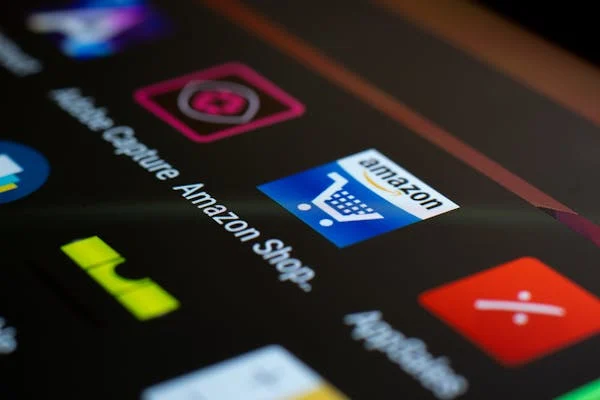
What Twitch offered Amazon
Twitch wasn’t only about watching others play games. It was a full-blown entertainment ecosystem with:
- Live chats, donations, and subscriptions
- Massive Gen Z and millennial user base
- A new way to consume media in real time
For Amazon, which owned AWS and was building its Prime Video empire, Twitch offered both tech and cultural relevance.
How it evolved
Post-acquisition, Amazon helped Twitch scale its infrastructure using AWS, introduced Prime Gaming (free perks for Prime members), and gradually tightened integrations with Amazon’s e-commerce and media arms.
Twitch became not just a video site—but a loyalty engine and cultural bridge to a young, passionate audience.
Actionable takeaway
If your brand needs access to a hard-to-reach demographic, find platforms they already love. Twitch wasn’t just popular—it was deeply engaging. Amazon didn’t try to rebuild it—they simply empowered it.
Culture can’t always be created. Sometimes, it must be acquired.
27. Apple’s acquisition of NeXT (1996): $429 million
Why this deal saved Apple
In 1996, Apple bought NeXT for $429 million. On paper, it looked like a standard tech acquisition. But it ended up being one of the most important deals in tech history.
Why?
Because NeXT was founded by Steve Jobs—and this acquisition brought him back to Apple.
At the time, Apple was struggling. Its products were clunky, sales were declining, and the company lacked a clear direction. NeXT provided two essential things: cutting-edge operating system software—and Steve Jobs’ leadership.
What NeXT gave Apple
NeXT’s operating system became the foundation of macOS, iOS, watchOS, and more. It was modern, object-oriented, and way ahead of its time.
Just as importantly, NeXT gave Apple:
- A development platform that could scale
- A technical culture of discipline and design
- Access to Jobs’ vision, team, and philosophy
This deal laid the groundwork for the iMac, iPod, iPhone, and everything that followed.
The turning point
By acquiring NeXT, Apple rebooted both its technology stack and its leadership. Jobs eventually became CEO again, simplified the product line, and launched a streak of innovations that transformed the company into a trillion-dollar giant.
Actionable takeaway
Sometimes, the most important part of an acquisition isn’t the tech—it’s the people. NeXT was the key to Apple’s future, not just because of its software, but because of who came with it.
When you find a company whose DNA can fix your own, don’t hesitate—even if it means rewriting your history.
28. Microsoft’s acquisition of Visio (2000): $1.375 billion
Why Microsoft targeted diagramming
In 2000, Microsoft acquired Visio Corporation for $1.375 billion. Visio was a leader in business diagramming software—used for everything from flowcharts to network maps to organizational charts.
At first glance, it might seem like a niche tool. But for Microsoft, it fit neatly into the growing Office suite and served a clear business need: visual communication.
Strategic alignment with Office
Visio’s user base consisted mainly of enterprise and technical professionals who needed to map out processes and systems. These were the same customers using Microsoft Excel, Word, and PowerPoint.
Here’s why the deal made sense:
- Document integration: Visio worked well with other Office tools, enhancing workplace productivity.
- Enterprise value: Visual mapping is critical for IT, engineering, and operations teams.
- Recurring licenses: Visio offered a business-friendly monetization model aligned with Microsoft’s goals.
This wasn’t about flash. It was about functionality.
Long-term payoff
Over the years, Microsoft integrated Visio into the Office ecosystem. It remains a popular tool for enterprise users and is available as part of Microsoft 365 cloud plans.
It may not be a household name like Excel or Word, but Visio generates strong, steady revenue—and fits Microsoft’s larger mission to power the modern workplace.
Actionable takeaway
Not all acquisitions need to be disruptive. Sometimes, adding a reliable, specialized tool to your platform can increase stickiness and unlock upsell opportunities. Microsoft used Visio to deepen its enterprise moat—and it worked.
29. Amazon’s acquisition of Zappos (2009): $1.2 billion
Why Amazon bought culture, not just shoes
In 2009, Amazon acquired Zappos, the online shoe retailer, for $1.2 billion. Zappos wasn’t just an e-commerce store—it was legendary for its customer service and quirky culture.
At the time, Amazon was already dominant in online retail. But Zappos brought something extra: heart.
What made Zappos different
Zappos didn’t win on pricing or product range. It won on experience. Its team would spend hours on the phone with customers if needed, offer free returns, and obsess over customer satisfaction.
Here’s what Amazon saw:
- A culture worth learning from
- A fanatical focus on customer happiness
- A team that lived its values, from hiring to operations
Rather than fully absorb Zappos, Amazon let it operate independently and preserve its identity.
The bigger picture
Tony Hsieh, Zappos’ late CEO, was an evangelist for company culture. His “Delivering Happiness” philosophy had ripple effects beyond Zappos.
Even today, Zappos serves as a case study in how culture drives growth. Amazon benefited not just from revenue—but from the internal insights that helped it continue improving its own customer-centric approach.
Actionable takeaway
Culture can be a competitive advantage. If you acquire a company that’s figured out something you haven’t—whether that’s service, hiring, or branding—don’t change it. Learn from it.
Amazon didn’t just buy a retailer. They bought a philosophy.
30. Microsoft’s acquisition of Nokia’s devices division (2014): $7.2 billion
Why Microsoft tried (and failed) in mobile
In 2014, Microsoft acquired Nokia’s devices and services division for $7.2 billion. This was a high-stakes attempt to save Windows Phone and compete with Apple and Android.
The goal? Control both hardware and software—just like Apple. But the execution faltered.
Why the deal was risky
At the time, Nokia had already lost major ground in the smartphone race. Android was exploding. The iPhone was maturing. And Microsoft’s mobile OS had weak app support and shrinking market share.
Still, Microsoft pushed forward, believing it could turn things around with:
- Hardware innovation from Nokia
- Deep Windows integration
- A brand still respected in Europe and emerging markets
Unfortunately, it wasn’t enough.
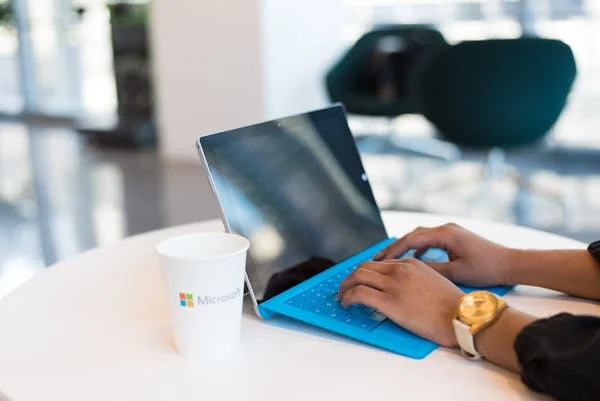
What went wrong
The mobile OS war was already over—and Microsoft was late. Developers weren’t building for Windows Phone. Carriers weren’t prioritizing the platform. Consumers had moved on.
By 2015, Microsoft wrote off the deal. Thousands of jobs were cut. Windows Phone was shut down shortly after.
Actionable takeaway
Speed matters. If you’re too late to a fast-moving market, even a bold acquisition might not save you. Timing, app ecosystems, and user momentum all matter.
Microsoft learned the hard way that hardware alone can’t fix a platform without adoption.
Conclusion
Big Tech doesn’t just acquire companies—they acquire strategic levers that shape markets, ecosystems, and user behavior.
Microsoft buys infrastructure and enterprise stickiness.
Amazon buys logistics, ecosystem enablers, and future-facing ops.
Apple buys seamless experience enhancers and future-proofing tech.











